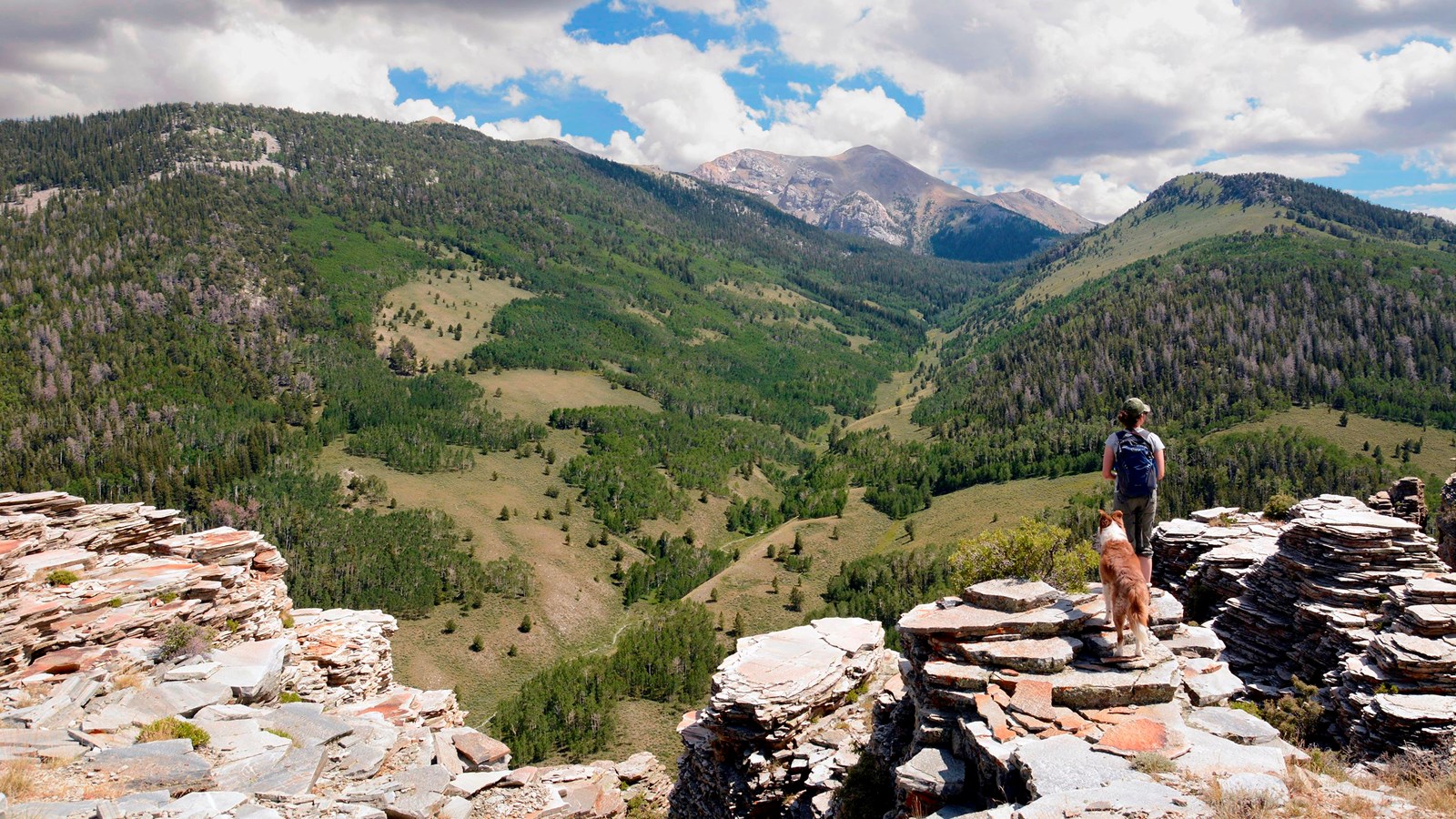Last updated: April 3, 2024
Place
Great Basin National Heritage Area

Photo Courtesy of Brandi Roberts, Great Basin National Heritage Area
Historical/Interpretive Information/Exhibits, Parking - Auto
The Great Basin National Heritage Area was designated in 2006. The non-profit Great Basin Heritage Area Partnership is the coordinating entity.
Straddling the Nevada-Utah state line, the Great Basin NHA lies in the vast, open, quiet expanse of the continent’s basin and range physiographic province characterized by long, high-elevation desert valleys separated by steep, narrow mountain ranges. This is a place of distant horizons, starry night skies, and a surprising diversity of flora and fauna including the ancient bristlecone pine. The NHA’s 16,000 square-mile area is equal in size to the nation’s five smallest states combined; home to only 23,000 people, it is one of the least densely populated regions in the country. Great Basin National Park lies in the middle. Many visitors arrive on Highway 50, “America’s loneliest road.”
Humans have inhabited the Great Basin for more than 13,000 years. The first people migrated throughout their homeland in search of food, with the seasons, and in response to long-term environmental change. Today, their descendants live on four small reservations - the Duckwater Shoshone, Ely Shoshone, Confederated Tribes of the Goshute, and the Kanosh Band of the Utah Paiute – continuing to adapt to a changing world while enriching the heritage of this region through their traditions of dance, music, and art.
White settlement began in the late 19th century. Pony Express riders came through briefly, followed by gold and silver miners whose luck had run out in California. Mining towns sprang up when copper was found near Ely, Nevada in 1900, and the Nevada Northern Railway was laid down to carry the ore to the smelters. Farmers, cattle ranchers, and sheepherders took up residence in the wide-open spaces. Some ranches have remained in the same family for seven or more generations, and the old sheepherders still gather to tell their stories. Ghost towns dot the landscape to recall the dozens of communities that boomed, busted, and disappeared.
In 1943, in an especially bleak stretch of desert outside Delta, Utah, citizens, and residents of Japanese descent were forcibly relocated from the California coast to the internment camp known as “Topaz,” named after a nearby mountain, for the duration of World War II. A museum on the main street in Delta now tells the stories of the 11,000 internees and this dark chapter in our nation’s history.
The Great Basin NHA offers visitors and residents crowd-free opportunities for recreational adventure – hiking, hunting, fishing, four-wheeling. This isolated expanse also invites contemplation of the landscape, and its occupants, through the ages.
